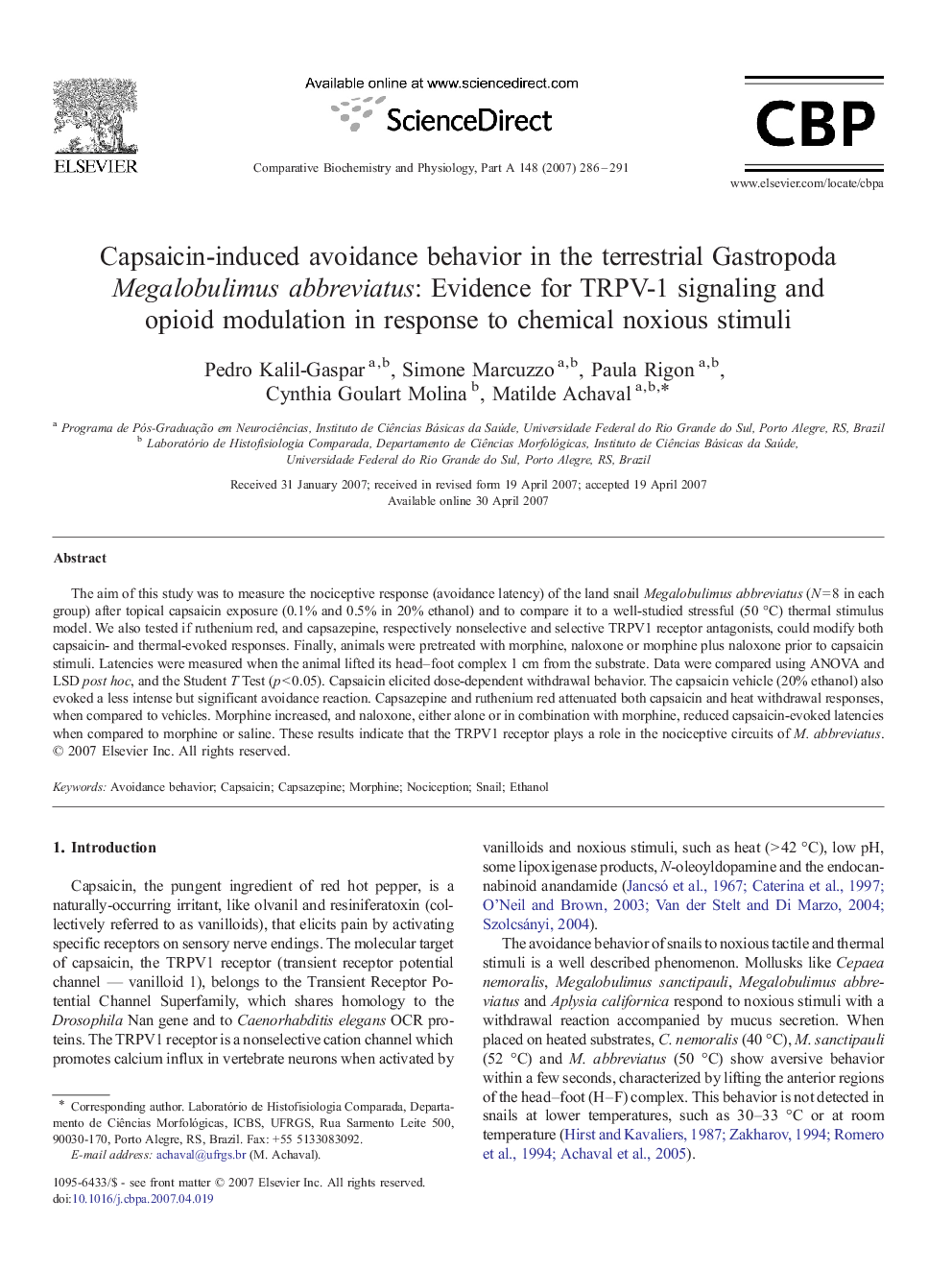| Article ID | Journal | Published Year | Pages | File Type |
|---|---|---|---|---|
| 1973001 | Comparative Biochemistry and Physiology Part A: Molecular & Integrative Physiology | 2007 | 6 Pages |
The aim of this study was to measure the nociceptive response (avoidance latency) of the land snail Megalobulimus abbreviatus (N = 8 in each group) after topical capsaicin exposure (0.1% and 0.5% in 20% ethanol) and to compare it to a well-studied stressful (50 °C) thermal stimulus model. We also tested if ruthenium red, and capsazepine, respectively nonselective and selective TRPV1 receptor antagonists, could modify both capsaicin- and thermal-evoked responses. Finally, animals were pretreated with morphine, naloxone or morphine plus naloxone prior to capsaicin stimuli. Latencies were measured when the animal lifted its head–foot complex 1 cm from the substrate. Data were compared using ANOVA and LSD post hoc, and the Student T Test (p < 0.05). Capsaicin elicited dose-dependent withdrawal behavior. The capsaicin vehicle (20% ethanol) also evoked a less intense but significant avoidance reaction. Capsazepine and ruthenium red attenuated both capsaicin and heat withdrawal responses, when compared to vehicles. Morphine increased, and naloxone, either alone or in combination with morphine, reduced capsaicin-evoked latencies when compared to morphine or saline. These results indicate that the TRPV1 receptor plays a role in the nociceptive circuits of M. abbreviatus.
